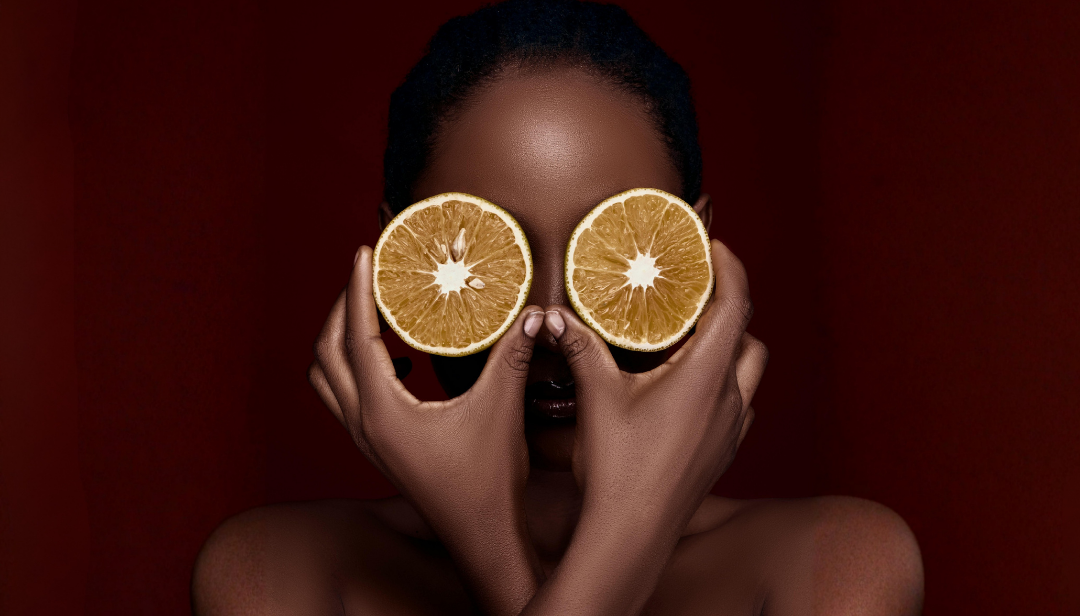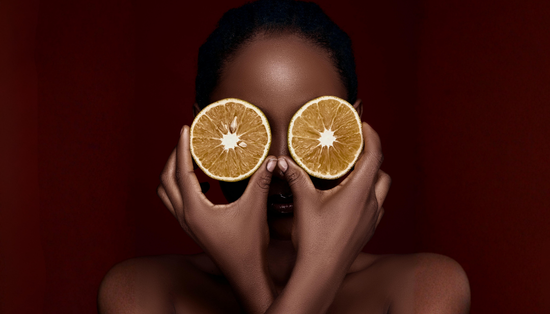We all know food fuels the body — but did you know your scalp barrier eats too? Not literally, but every follicle is surrounded by cells that need vitamins, fatty acids, and hydration to build sebum, collagen, and keratin. And here’s the aha-moment: your scalp has no nutrient storage system. Unlike the liver or fat tissue, it can’t stash away vitamin D, omega-3s, or vitamin C. That means the seasonal shift in your diet shows up on your scalp almost immediately.
Autumn’s withdrawal effect
When autumn hits, the supply chain weakens:

- Fewer fresh fruits = less vitamin C = weaker follicle support.
- Less omega-3 intake = waxier sebum that clogs instead of coating.
- Less vitamin D = disrupted growth cycles, triggering autumn shedding.
- Less water-rich air and food produce = dry scalp + static-prone hair.
Summer’s hidden support

Miss out on the right nutrients, and the signs show up fast: sluggish collagen makes the follicle bed weaker, waxy sebum clogs roots, dryness from inside raises TEWL (transepidermal water loss), and poor vitamin D signalling can throw hair cycles off balance. Here are some smart additions to avoid autumn scalp & hair quality loss:
Vitamin C from berries and fruit fuels collagen that acts like the scaffolding around each follicle.
Omega-3s from seeds, and fresh fish keep sebum fluid and protective instead of waxy.
Water-rich foods like cucumbers and melons reduce transepidermal water loss (TEWL).
Sunlight and vitamin D keep hair cycling steady by regulating anagen (growth) vs telogen (shedding).
This mix is why your scalp feels fresher and more balanced in the summer - and why hair often looks fuller and shinier. Because your scalp can’t store nutrients, the effect isn’t delayed. It’s immediate. That’s why scalp tightness, itch, and shedding often start by late September and may therefore be noticed before the cold season and weather change starts.
Dakmatter’s science-first rescue
At Dakmatter, we bridge inside-out nutrition with outside-in care:

- 010 Slip Wash Pro – cleanses while preserving protective lipids, never stripping.
- 022 Hydro Mask Pro | Light a weekly re-lipidising rescue with six humectants and nut oils that mimic the protective role of omega-3s and water-rich foods.
- 121 Zizizia Senso Spray – microbiome-friendly hydration to calm irritation and restore balance post-wind or heaters.
Together, with the following small seasonal tweaks, the Dakmatter regimen acts as your scalp's rescue team - giving it back as much as possible of what diet and sunlight stop providing when summer ends:
- *Add citrus, pumpkin, walnuts, and flaxseed to your meals for scalp nutrients.
- *Spend 10–15 minutes outside daily to stabilise vitamin D levels.
- *Use Hydro Mask weekly to replace sweat-driven hydration with barrier-driven hydration.

Your scalp doesn’t wait for winter — it starts struggling as soon as autumn changes your plate and your light exposure. Since it can’t store what it needs, you have to feed it daily, inside and out. 🍂


 trichologyeurope.com
trichologyeurope.com


